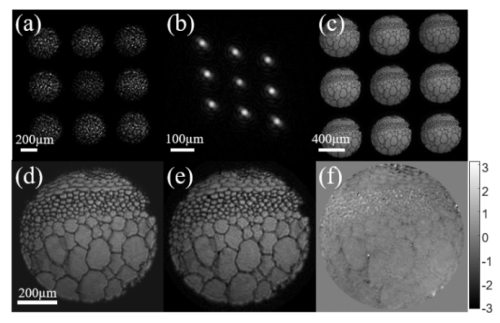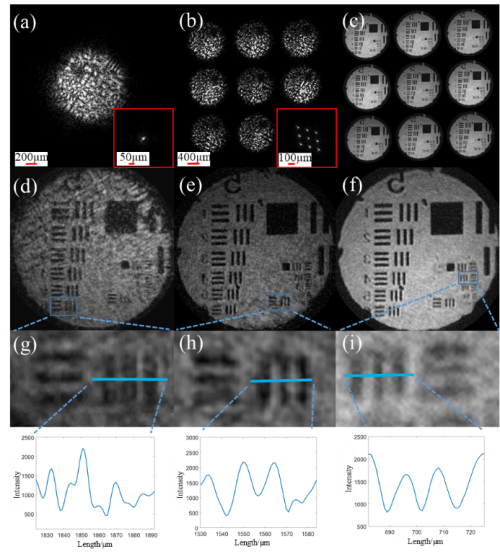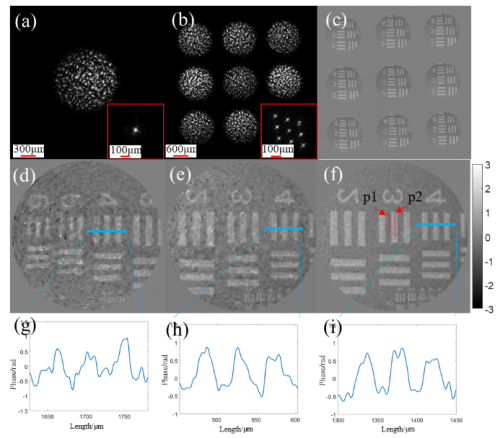The Key Laboratory of High Power Laser and Physics, Shanghai Institute of Optics and Fine Mechanics (SIOM) of the Chinese Academy of Sciences (CAS) proposed a new scheme based on split-beam encoding average coherent diffraction imaging. Single-shot phase imaging with high signal-to-noise ratio can be achieved. The related research results were published in Optics Express under the title of "Single-shot phase reconstruction based on beam splitting encoding and averaging" on December 16, 2021.
Single-shot phase imaging realizes the phase measurement of the specimen or the beam on the premise of recording only one diffraction pattern, which has important application value in ultrafast measurement, high-power pulse measurement and ultra-short pulse beam measurement. Generally, single-shot phase imaging faces the problem of low resolution caused by low signal-to-noise ratio. The spatial resolution of single-shot phase imaging based on coherent diffraction imaging can theoretically reach the diffraction limit, but the traditional coherent diffraction algorithm has low redundancy, which affects its convergence performance.
To solve the above problems, the researchers proposed a split-beam encoding average phase imaging technique (BSEA). In this technology, a beam splitting grating is introduced into the coherent modulation optical path to divide the beam into sub-beams of different angles, an averaging algorithm is added between the sub-beams, and each sub-beam is modulated by different codes. Therefore, it is equivalent to that the beam has undergone multiple different codes and modulations, which effectively improves the convergence performance and the reconstruction signal-to-noise ratio.
In addition, due to the multiple different encoding modulations, the requirement for the modulation capability of the encoding plate is lowered, and the sparse encoding plate can be used to achieve complex amplitude reconstruction with high signal-to-noise ratio.
In the experiment, complex amplitude measurements were carried out on biological samples, amplitude resolution plates and phase step plates. The spatial resolution was 6.2 μm, which reached the resolution limit of the system, and the phase measurement error was better than 4.4%. Benefiting from high convergence performance, this method can reconstruct complex wavefronts, and has important application prospects in ultrafast phenomenon phase measurement, ultrashort pulse phase measurement and other fields of single-shot phase reconstruction.

Figure 1. Comparison of phase measurements of biological samples based on BSEA and direct imaging. (Image by SIOM)

Figure 2. Comparison of the reconstruction results of the amplitude-resolution plate based on BSEA and the traditional method. (Image by SIOM)
Figure 3. Comparison of the reconstruction results of the phase step plate based on BSEA and the traditional method. (Image by SIOM)
Article website:
https://doi.org/10.1364/OE.446977
Contact:
WU Xiufeng
General Administrative Office
Shanghai Institute of Optics and Fine Mechanics, CAS
Email: xfwu@siom.ac.cn
Web: http://english.siom.cas.cn/